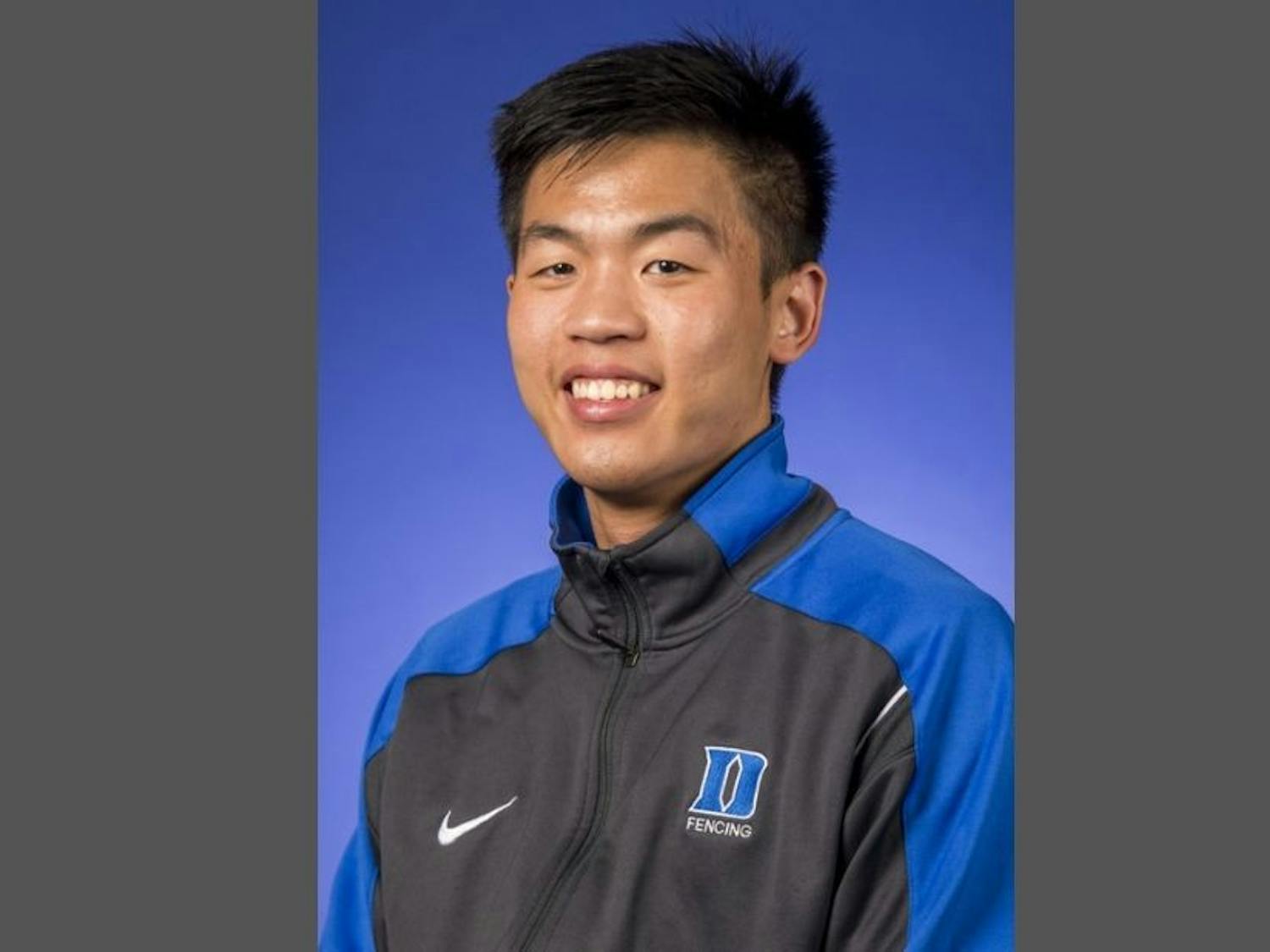It was two days before Thanksgiving and by 7 p.m., campus was deserted. Garry Husketh, a veteran of the Duke University Police Department and a Durham native, got into his patrol car to begin his night shift. He would be relieved at dawn.
“I’d like to stress the fact that we’re here to help people,” he said. “Of course the job’s not always easy, but there’s a purpose for it.”
Campus police are an intrinsic part of life at Duke—DUPD officers can be seen every day patrolling the quads, directing traffic and even keeping watch on the stretch of road between Shooter’s II and East Campus. And yet, for many students, DUPD is an unknown entity.
“People don’t want to see us, but they want us out here somewhere,” Husketh said.
For some, this presence—despite its vagueness—may be enough to guarantee peace of mind. However, campus policing has come under increased scrutiny in recent years, especially on issues like accountability, transparency and use of force. In light of these hard questions, The Chronicle met with administrators and police officers to better understand how DUPD works.
Meet the Duke Police
Like many campus police agencies across the nation, DUPD cannot be easily classified as either public or private. It is a state-commissioned police agency, but it is also funded and supervised by a private university. So who calls the shots?
“[Duke] derives its legal ability to have a police entity on its campus from state law,” said Vice President for Administration Kyle Cavanaugh. “So the agency is then connected to the University, but it is the state law that governs it.”
Duke’s administration oversees and funds DUPD, which is where Cavanaugh comes in. He is the only person in the University administration who has a direct leadership role in relation to DUPD. But he noted that DUPD operates “very independently” and that he does not “intervene.”
“My role is administrative—the analogy I would give is similar to the city manager,” Cavanaugh said. “You have a police agency, but then you have someone who has to do the things I get involved with—budget, technology, structural pieces for radios and 911 system, the physical plant and equipment issues.”
He noted there are “checks and balances” to ensure DUPD complies with state law and that he works with Duke’s office of counsel or outside counsel if necessary. However, he did not specify what those “check and balances” were or say how they guarantee that DUPD is always in compliance with the law.
The agency itself is led by Chief of Police John Dailey, who took over in 2009. Currently, he oversees 60 commissioned members, 70 security officers and about 30 support staff and dispatchers and reports to Cavanaugh.
“We are charged with providing security and police services, and operationally, I’m responsible for that as the senior commissioned member of the department,” he said.
DUPD obtained national accreditation in Spring 2016 from the Commission on Accreditation for Law Enforcement Agencies, a private, nonprofit accrediting agency. CALEA has accredited roughly 1,000 law enforcement agencies out of the total 18,000 agencies nationwide, according to their data.
Dailey emphasized that DUPD is first and foremost a law enforcement agency—its officers have the same powers as any municipal police officer, including the authority to make arrests and use force. This also means DUPD enforces the law, not university policy.
“It’s really the University that comes up with policy decisions about sexual assault, alcohol and that sort of thing,” Dailey said. “Clearly there are laws about that, and we take care of that. Policy issues are handled on the University side and are separate from us.”
However, policy-making on campus policing can be fluid. Cavanaugh said that Duke is “fortunate” in that it does not have to work through rigid governance structures to make policy.
For example, Cavanaugh said the implementation of a body camera program for officers was a collective decision that came out of a “partnership.” Dailey added that DUPD played a major role.
“The decision about body cameras was something we considered when we saw what was going on nationally,” Dailey said. “There is a level of accountability, and our officers were extremely open to wearing body cameras. And then a student group also said they would like for us to have body cameras, so that was perfect. So in that case, that was something we sort of led.”
Student groups are sometimes consulted to be part of DUPD’s decision-making, but this is an informal process and there is no official advisory body or platform. On its website, DUPD states that it “meets with student groups and leaders to discuss topics of concern.”
How transparent is DUPD?
Transparency continues to be a hotly debated issue, and on that point, Dailey and Cavanaugh both emphasized that DUPD fully complies with the laws that require campus police agencies to disclose certain information to the public.
The federal requirement comes from the Clery Act, which requires universities to enact security policies such as keeping a daily crime log, providing timely warnings of crimes and releasing an annual security report.
On a day-to-day level, DUPD prepares and maintains the crime log and the security report. Both are regularly published online and available in hard copy at DUPD headquarters.
North Carolina laws impose additional requirements which are stated in section 5.1 of the Campus Police Act. Under this law, only some information is publicly accessible. Not much disclosure is required for violations that do not end in arrest. But once an arrest is made, the level of disclosure goes up significantly—information about the person arrested and the circumstances of the arrest must be made public.
“People have the misperception that records law entitles people to a police report—it does not. It entitles them to a couple pieces of information about the incident,” Dailey said.
DUPD’s current policy is to only release the first page of an incident report in response to public requests. This page includes seven sections—incident data, methods, victim, others involved, property, officer identification and status. Information related to offenders is never listed on the first page, but beyond that, it is unclear what the rest of the report contains.
If an arrest occurs, the public can request a separate arrest report in addition to the incident report. Again, this is a single page—it includes information about the arrestee, the arrest, vehicles, bond, drugs at the time of arrest, complainant and narrative.
Cavanaugh noted that Duke administration is not involved in the keeping or releasing of DUPD records, but it “ensures that the police agency is following what is required under state law.” When asked about his involvement in DUPD’s handling of the case in which Executive Vice President Tallman Trask hit a contract employee named Shelvia Underwood with his car last year, Cavanaugh said it was “zero.”
For this article, The Chronicle on multiple occasions was able to obtain incident and arrest reports within one business day of the request at no cost. In the reports obtained, some of the fields were left blank, and redactions of information such as the home addresses of officers were made.
Some of The Chronicle’s requests for reports were previously denied, even though the incidents were recorded in the daily crime log. For instance, underage consumption is logged frequently and is in violation of state law, but no reports are publicly available. The explanation given by the University was that the reports were filed by other Duke departments, such as the Office of Student Conduct.
“Functionally we do pretty much the exact same thing as any city police department would do. It’s just that our so-called records law are not called ‘public’ records law,” said Sara-Jane Raines, DUPD assistant chief of support services. “Functionally it’s the same, except we’re allowed to protect student information.”
Frayda Bluestein and Jeff Welty, both professors of public law and government at the University of North Carolina at Chapel Hill, largely agreed with Raines after inspecting the reports obtained.
“For what it’s worth, what Duke has given [The Chronicle] is similar to what you might get from Durham Police Department if you asked Durham PD for records relating to a specific incident,” Welty wrote in an email.
However, Bluestein and Jonathan Jones—instructor at Elon University and Director of the North Carolina Open Government Coalition—both agreed that sections of the police report for the traffic incident in August 2014 involving Trask did not fulfill DUPD’s public records requirements. In that case, Bluestein and Jones noted that the first page of the report, which DUPD released, did not contain an adequate description of the incident, which public records require be made public.
In addition, Welty noted that DUPD’s handling of the Trask incident raised questions about a conflict of interest, since DUPD reports to Trask through Cavanaugh.
“I don’t know of a system by which they would analyze [potential conflicts of interest], but I think it’s a legitimate question,” he said in a 2016 interview with The Chronicle.
The state laws on campus police records were passed in 2013 partly as a result of a lawsuit. In that case, a student sued Elon University for records, arguing that campus police agencies should be subject to public records laws since they have powers similar to a public police department. In the end, Elon won the case, but there was widespread support for amending the Campus Police Act.
The current section 5.1 is a result of that legislative amendment. Dailey confirmed that Duke, along with other private universities in North Carolina, was involved in shaping the amendment and getting it passed. Leo Daughtry and Stephen Ross, members of the North Carolina General Assembly and primary sponsors of the bill, did not respond to requests for comment.
North Carolina is one of few states in which campus police agencies are subject to a records law. However, in other states, some universities voluntarily disclose information even when there is no legal obligation to do so.
For example, Harvard University maintains a more detailed crime log with exact addresses of incident locations and more detailed descriptions of incidents. Yale University publishes the general orders—the internal operational guidelines—of its police department, including its use of force policies. Brown University releases statistical data on field stops and citizen complaints. Currently DUPD does not adopt any of these practices.
When asked whether Duke administration is pushing for greater transparency in campus policing, Cavanaugh did not make a firm commitment.
“We’re at an interesting point in time nationally on this topic,” he said. “We have a responsibility to ensure that our policing agency is not only following the letter of the law, which we believe they do, but also there’s always this balance of a number of different competing priorities, from the curiosity of the public, to protecting the rights of victims and ensuring the integrity of the investigative process.”
DUPD and the community
Any conversation on campus policing inevitably brings up the issue of implicit bias, and at Duke, criticisms about bias in policing operations, especially on the grounds of race, have almost become a yearly fixture.
In March 2016, DUPD came under fire for how it handled the traffic incident involving Trask. In response, Duke Students and Workers in Solidarity called for—and continues to call for—an independent, external review of DUPD.
In April 2015, then-chair of the sociology department Eduardo Bonilla-Silva spoke about a “climate of hostility,” which included people of color being asked for identification by DUPD officers. Bonilla-Silva is on leave and declined to comment. In April 2014, students met with administrators and DUPD to address concerns raised by students of color. This meeting was in the immediate aftermath of DUPD officers pepper-spraying a Durham resident at the West Campus bus stop.
Reports of similar meetings go back a decade, if not more.
Dailey vigorously defended DUPD’s record and pointed to the professional training received by officers.
“Everybody’s implicitly biased—it’s part of being human,” Dailey said. “Several years ago, we recognized it is important that all of us understand [...] what we might do to have the interactions be as respectful and dignified as they can. So that’s why we started working with [the Office of Institutional Equity] around implicit bias.”
Dailey noted that DUPD is 50 percent people of color and that officers are exposed to a wide range of people in the line of duty, which he believes can fight bias. He also said DUPD hires a consulting group to evaluate officers’ emotional intelligence in categories such as empathy, social responsibility and reality testing.
Ben Reese, vice president for institutional equity and head of OIE, has led DUPD’s implicit bias training for nearly 20 years. The program, designed by Reese, includes psychological theory, academic research and simulations involving videos and professional actors.
Raines worked closely with OIE in coordinating implicit bias training, and she detailed instances in which OIE brought in outside experts to teach techniques such as “verbal judo” and de-escalation.
“At Duke, we started the conversation about officers and implicit bias. While the Ferguson stuff was going on, we were getting that training from OIE,” Raines said. “So it wasn’t like we were reacting to events, we were actually trying to be proactive.”
In the past three months, The Chronicle has reached out to students, faculty and staff in an attempt to gauge the Duke community’s opinion toward DUPD officers. The vast majority did not respond or had no comment. Those who responded mostly agreed that DUPD officers were polite, efficient and helpful. Most respondents were satisfied with DUPD, and although The Chronicle has heard accounts of complaints, we were unable to verify any of them despite extensive efforts.
Raines said DUPD receives “very few” citizen complaints and has an internal review system, set up in accordance with Duke rules, to assess officers’ performances. To keep officers accountable, DUPD primarily relies on the body cameras worn by every officer, and footage from those cameras are randomly reviewed. Although OIE provides training, it does not separately collect data on officer performance.
“Pretty much every encounter we have is on video,” Dailey said.
Raines noted that all stops are tracked and said DUPD has been “very pleased” that officers do not seem to be “enacting any implicit bias in their stops.”
Video footage from DUPD’s body and dashboard cameras are not made public in order to “protect community members’ privacy,” Cavanaugh previously explained. However, according to state law, any person depicted in a video can request to see the relevant parts.
Senior Tiana Horn, president of the Black Student Alliance, wrote in an email that BSA worked with DUPD on controversial policies in the past—most notably in 2014 when Marcus Benning was president—but currently does not have a stance on DUPD. In response to Dailey’s comments on implicit bias, Horn said they were “pretty in line with what [DUPD] reported at President's Council of Black Affairs meetings.”
Junior Elizabeth Barahona, president of Mi Gente, did not express an official stance on behalf of the group.
Lara Haft, a senior who was involved in the Allen Building sit-in earlier this year, criticized implicit bias training as a “band-aid solution,” and alleged that DUPD has a “history of anti-black racism” directed toward Durham residents. She argued that the private nature of a campus police agency predisposes it to protect university property over the community’s safety.
Responding to past controversies, Reese said that “any interaction where an individual has a concern with the police department should be fully and deeply examined.”
But he noted that the community’s response may be influenced by other incidents involving race.
“I think some people may lump what is happening across the country with a campus police officer,” Reese said. “As a psychologist, I understand that process, but I think it is unfortunate for the community and the police officer.”
Dailey emphasized that DUPD officers enjoy working with the Duke community.
“I think that’s one of the special things about this department,” he said. “We do have a large group of folks that really do care about people, and that reflects in their dedication to the work they do every day.”
East Campus, Tuesday 9:30 p.m.
Two hours into his patrol, Husketh was mostly closing doors. When card-controlled doors are left open, DUPD gets an alert and sends patrolling officers to close them. The score thus far was DUPD three, doors zero. It was a slow night.
The patrol car arrived near the East Campus bus stop and was approached by a security officer and a middle-aged woman. Apparently, the woman was lost and had asked for help. Her speech was slurred, and she appeared confused.
Husketh checked her ID and asked where she lived, but the location was outside DUPD jurisdiction, so he called the Durham Police Department to see if they could help. In the end, he decided to bring her to headquarters and then figure out how to get her home.
“She’s there, [with a] speech problem, and not dressed for this weather. It’s a good 15 miles. We need to take her to meet an officer, and take it from there—we’ll make it happen some way,” Husketh said, as we sped toward the station in the dark.
“This is one of many things people don’t see,” he added. “This is what we do.”




